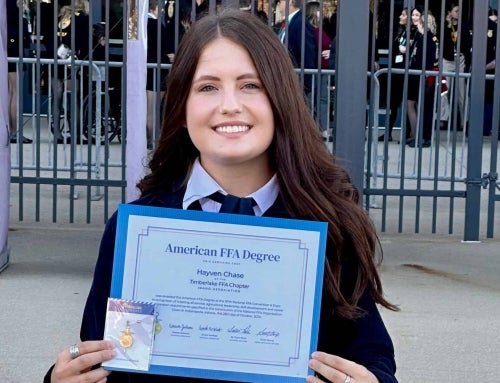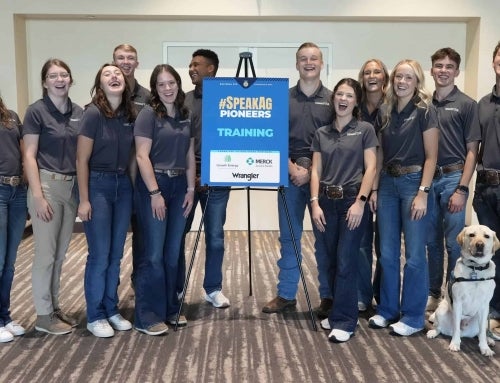Spending days at the swimming pool. Working a summer job. Harvesting and baling hay. Oftentimes summer as a high school student is spent taking a break from studies and pursuing other interests. Summers for Atticus Humphrey from Sanger, Calif., were a bit different. Every summer from the 8th grade until graduating high school, Humphrey spent in the classroom taking dual enrollment courses.
“Now, only two years after receiving my high school diploma, I am a senior at Fresno State University,” Humphrey says. “The number of dual enrollments courses for the pathway I choose guaranteed a two-year associates degree in plant science by the time I graduated. Basically, I went to my high school graduation ceremony on a Friday and on Saturday I was walking across another stage to accept a college diploma.”
Dual enrollment courses are oftentimes agreements between local universities and high schools for certain classes to count as credits towards both programs. In many states, students enrolled in these courses receive a free or discounted fee when they meet the academic requirements. During the 2010-11 school year, 1.4 million high school students took college courses nationwide, according to the U.S. Department of Education; nearly 10 percent of the entire high school population.
“I barely had an agricultural background before starting these courses,” Humphrey says. “For me, FFA was a thing that I had no clue about until I took my first dual enrollment course after the 8th grade. Since getting involved, I have competed in agriscience fairs, proficiencies and on CDE teams of all kinds.”
Today, Humphrey is working toward his final requirements for a bachelor’s degree, and applying for graduate programs to study plant science, entomology and genetics.
“I would highly recommend being a part of dual enrollment courses if they are offered in a pathway you are interested in,” Humphrey advises. “On the surface, my traditional classes weren’t that much different from my college classes. There were some courses that I was able to fly through and others that were really challenging. All in all, you should prepare for dual enrollment classes to be rigorous, but manageable when you put your mind to it.”
Dual enrollment courses are rising in frequency and popularity. Check in with your advisor and your school counselors to determine what classes are right for your future and your schedule.












